It looks like you're using an Ad Blocker.
Please white-list or disable AboveTopSecret.com in your ad-blocking tool.
Thank you.
Some features of ATS will be disabled while you continue to use an ad-blocker.
share:
reply to post by LausDeo
My personal mundane explanation for the intertwined serpent motif would be that after siezing the plant of life it immediatly shed it's skin, and thus that's the context it's depicted in, with the skin shedding serpent thus also becoming the symbol to be reborn/reincarnate
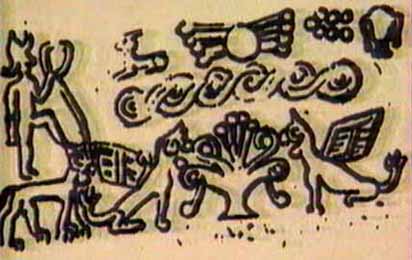
Plant of Life/Gilgimish
My figuring for an associated constellation of this serpent, and Plant of Life, would be Cetus, below and between Pisces/Aquarius, all things considered i'd expect it to be there.
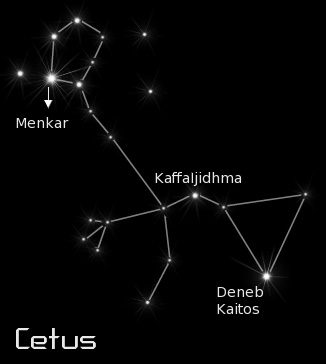
Sumerian texts that are extant were generally inscribed on clay, and stored in libraries attatched to Royal Palaces, when these got burnt down/destroyed over time they simply tended to bake hard and thus survive.
Many of these are of commercial transactions and that was probably the driving force for the development of text/signs and numbers.
My personal mundane explanation for the intertwined serpent motif would be that after siezing the plant of life it immediatly shed it's skin, and thus that's the context it's depicted in, with the skin shedding serpent thus also becoming the symbol to be reborn/reincarnate

Gilgamesh, I will disclose unto you
A hidden thing.
Yes, a secret of the gods will I tell unto you:
There is a plant,
Its thorn is like the buckthorn,
Its thorns will prick your hands
As does the rose
If that plant shall come to your hands
You will find new life'.
No sooner had Gilgamesh heard this
Than he opened the water-pipe He tied heavy stones on his feet in the manner of the pearl divers
They pulled him down into the deep
There he saw the plant.
He took the plant, though it pricked his hands.
He cut the heavy stones from his feet
The sea cast him up upon its shore
Gilgamesh says to him
Says to Urshanabi the Boatman:
'Urshanabi, this is the plant that is different from all others.
By its means a man can lay hold of the breath of life.
I shall take it to Uruk of the ramparts.
I shall cause....
To eat the plant....
It shall be called Man Becomes Young in Old Age.
I myself shall eat it,
that I may return to the state of my youth.'
There I myself shall eat the plant that I may return to the state of my youth.'
After 20 intervals they broke off a morsel.
After 30 more rested for the night.
Gilgamesh saw a well whose water was cool
He descended into it to bathe in the water
A serpent smelled the fragrance of the plant
It darted up from the well and seized the plant:
Sloughing its skin in rejuvenation as it returned
Plant of Life/Gilgimish
My figuring for an associated constellation of this serpent, and Plant of Life, would be Cetus, below and between Pisces/Aquarius, all things considered i'd expect it to be there.

Sumerian texts that are extant were generally inscribed on clay, and stored in libraries attatched to Royal Palaces, when these got burnt down/destroyed over time they simply tended to bake hard and thus survive.
Many of these are of commercial transactions and that was probably the driving force for the development of text/signs and numbers.
edit on 26-4-2012 by Kantzveldt because: Add constellation
A few more loose ends, below is seen the viewpoint of the setting sun seen due West at Equinox 4470 BC, from Bagdhad. This position, with the
ecliptic plane intersecting with the Milky Way at the foot of Gemini has been considered as the zero point of the Sumerian Dynastic count, as i noted
that's three full signs of the zodiac up until the present, when this now occours at the Summer Solstice.
These positions are consistent with what is seen in the iconography of a Gemini twin portal above Taurus.
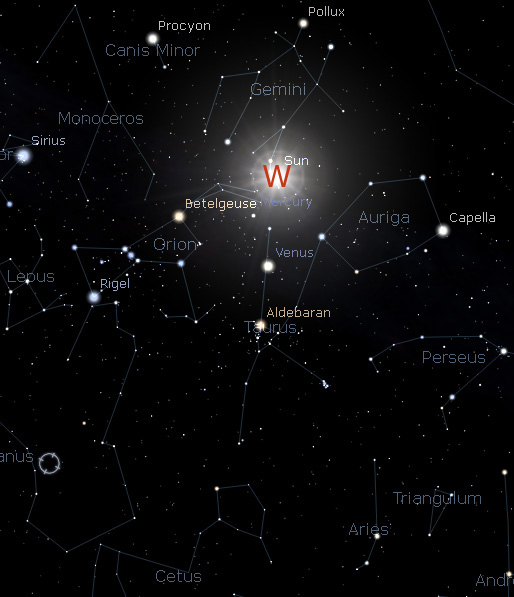
The next diagram shows were the equinox took place around 2,300 Bc, that is a zodiac sign later, between Taurus and Aires, here one sees that the Pleides are a very good marker for this point, and many cultures particularly in the Americas have origin myths connected to the Pleides.
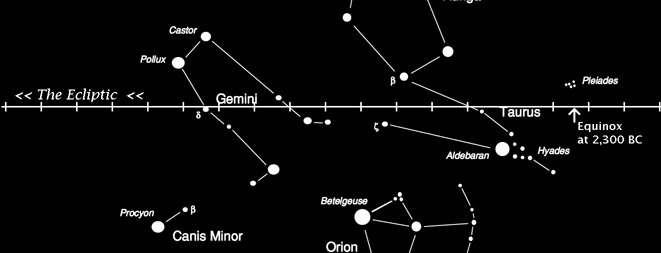
The Pleides in Sumeria were seen as a seven stars cluster and can be seen on many of the seals, their being in the vicinity of the bull of Heaven
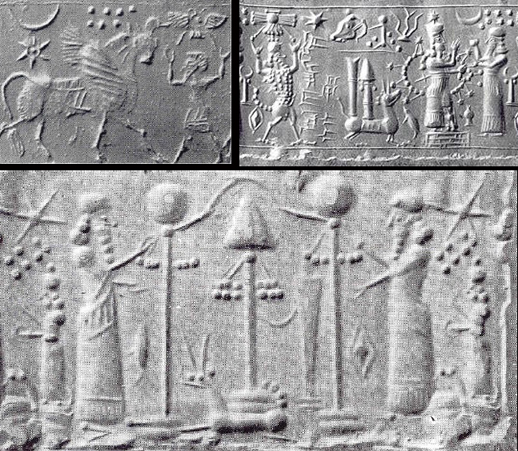
Given the associations of Ishtar with the bull, it is likely the seven Pleides that are concerned with the seven stages of her dress/ornamentation as she passes through the seven gates into the underworld, at later dates the Pleides could be seen as seven attendents of Goddess' such as Hathor, Astarte or Venus Aphrodite.
I also had a look at were the current academic thinking on these motifs is at;
Spring Equinox sky lore
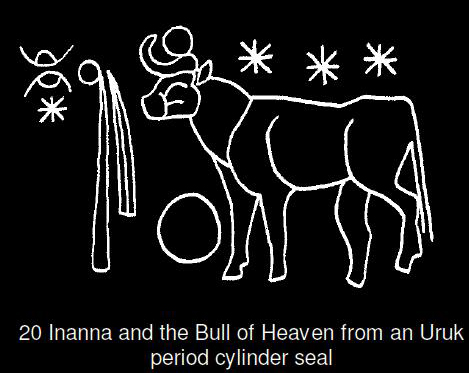
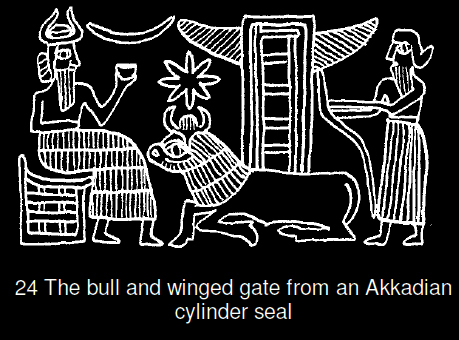
These positions are consistent with what is seen in the iconography of a Gemini twin portal above Taurus.

The next diagram shows were the equinox took place around 2,300 Bc, that is a zodiac sign later, between Taurus and Aires, here one sees that the Pleides are a very good marker for this point, and many cultures particularly in the Americas have origin myths connected to the Pleides.

The Pleides in Sumeria were seen as a seven stars cluster and can be seen on many of the seals, their being in the vicinity of the bull of Heaven

Given the associations of Ishtar with the bull, it is likely the seven Pleides that are concerned with the seven stages of her dress/ornamentation as she passes through the seven gates into the underworld, at later dates the Pleides could be seen as seven attendents of Goddess' such as Hathor, Astarte or Venus Aphrodite.
I also had a look at were the current academic thinking on these motifs is at;
Spring Equinox sky lore

On the right-hand side, the Bull of Heaven appears with a series of three stars placed above it, this being a variant form of the Mul-sign that signifies a ‘star, planet or constellation’. The group of signs on the left-hand side can be read as ‘the goddess Inanna of sunrise and sunset’. Inanna herself is represented by her sacred reed column that stands in front of the bull, and her status as a deity is marked by the eight-pointed star. The signs used to represent ‘sunrise’ and ‘sunset’ are an upright and inverted image of the sun rising between a pair of mountains. As an attribute of Inanna, they identify her with the planet Venus, which is only seen as the Morning and Evening star.
So this seal not only furnishes us with the earliest evidence of a constellation in Mesopotamia but also represents the first definitive association of a planetary deity with a constellation.

The bull’s shifting position among the stars may well inform a distinct art motif found on number of late 3rd millennium seals. It is generally called the ‘bull and winged gate’ by modern scholars, if indeed, a gate is actually depicted. The motif is of unknown significance, but the common appearance of a star above the bull’s head certainly suggests that an astral theme is alluded to.
The format of the images varies somewhat – the bull can crouch before the figure of a god or goddess, who sometimes holds a tether fastened to the bull’s nose-ring, while in other images an attendant may hold the tether, which is either attached to the winged gate or held by the deity.
Given that the symbol of the tethering rope or celestial bond is often applied to the solstices and equinoxes we might have in these images a visual record of Taurus’ shift away from the spring equinox.
edit on 26-4-2012 by Kantzveldt because: typo
edit on 26-4-2012 by Kantzveldt because: typo
.
Just checking in the thread seems to be coming along nicely ...
Are you going to stick with perspective that these "Gates" were just directions to star systems ?
And yes when you partake of the Tree of Life you do shed your skin ..although not in the way you are probably thinking .
If you want to find the supporting evidence of my prior assertions on pg 1 research more deeply the tree of life aka rope, ladder , stairs, mountain ..
This will tie into your gates perfectly and clarify just what is being referred to.
I'm glad to see some people are interested in this stuff .
I'll be posting a thread tying all these aspects together and relating to a Global "mythos" ..
Then I hope people will start to get it ..
Keep it up I'm enjoying your slant and the imagery you're producing .
.
Just checking in the thread seems to be coming along nicely ...
Are you going to stick with perspective that these "Gates" were just directions to star systems ?
And yes when you partake of the Tree of Life you do shed your skin ..although not in the way you are probably thinking .
If you want to find the supporting evidence of my prior assertions on pg 1 research more deeply the tree of life aka rope, ladder , stairs, mountain ..
This will tie into your gates perfectly and clarify just what is being referred to.
I'm glad to see some people are interested in this stuff .
I'll be posting a thread tying all these aspects together and relating to a Global "mythos" ..
Then I hope people will start to get it ..
Keep it up I'm enjoying your slant and the imagery you're producing .
.
edit on 27-4-2012 by R0CR13 because: typo
reply to post by R0CR13
Hi, glad you're enjoying the thread, keep me posted if/when you start a related thread.
Regarding my perspective,i'd say really i've been more concerned thus far in trying to outline the correct Sumerian perspective, but here's a thought, when you see a cool conjuring trick it sometimes helps to watch what the other hand is doing rather than the one holding the alluring shiny object...
With this in mind take for example a viewpoint of the 2012 winter solstice, but not looking South East were the Sun is rising in Scorpio, preceded by Venus and Mercury as Morning stars, but the opposite side of the sky in the North West;
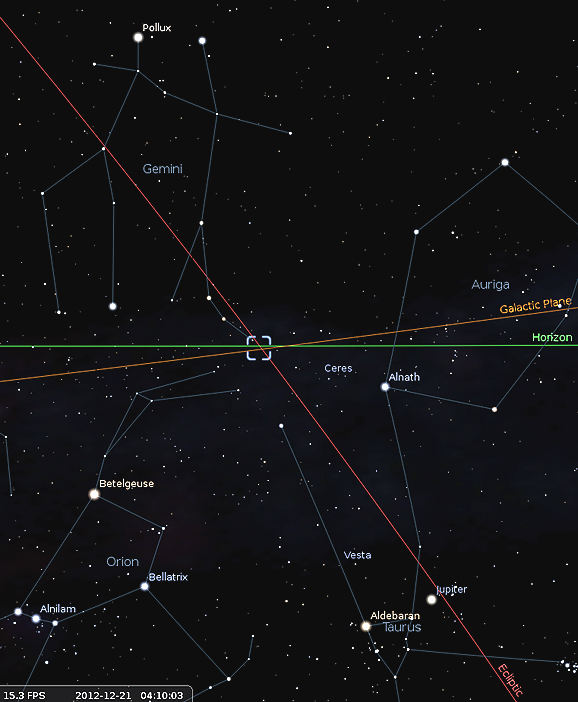
Before sunrise Gemini will be seen in what is essentialy it's optimum upright position, this varying slowly over long periods of time, generally setting at a slant, but at present perfect for how the constellation was conceptualized.
Having looked at the mythology regarding what this gate could be seen to be about, well it provided access unto the Underworld, but also it could be associated with a figure of death emerging from it as in the Gilgimish narrative, or even the threat of Inanna to call forth the dead from it such that they consumed the living, thus it also provided access from the Underworld.... just a cheery thought.... ...maybe also worth sparing one for the 300 Annunaki held within the Netherworld.
Maybe reassuringly some of the constellation in the vicinity of Gemini/Taurus are thought to have had qualities associate with trying to prevent such scenarios,
Skyscript
Hi, glad you're enjoying the thread, keep me posted if/when you start a related thread.
Regarding my perspective,i'd say really i've been more concerned thus far in trying to outline the correct Sumerian perspective, but here's a thought, when you see a cool conjuring trick it sometimes helps to watch what the other hand is doing rather than the one holding the alluring shiny object...
With this in mind take for example a viewpoint of the 2012 winter solstice, but not looking South East were the Sun is rising in Scorpio, preceded by Venus and Mercury as Morning stars, but the opposite side of the sky in the North West;

Before sunrise Gemini will be seen in what is essentialy it's optimum upright position, this varying slowly over long periods of time, generally setting at a slant, but at present perfect for how the constellation was conceptualized.
Having looked at the mythology regarding what this gate could be seen to be about, well it provided access unto the Underworld, but also it could be associated with a figure of death emerging from it as in the Gilgimish narrative, or even the threat of Inanna to call forth the dead from it such that they consumed the living, thus it also provided access from the Underworld.... just a cheery thought.... ...maybe also worth sparing one for the 300 Annunaki held within the Netherworld.
Maybe reassuringly some of the constellation in the vicinity of Gemini/Taurus are thought to have had qualities associate with trying to prevent such scenarios,
The final group of springtime constellations have a strong calendrical significance, as they seem to be purposefully located at the juncture of the old and new years. At this time of natural abundance, the earth was thought to ‘open up’ in order to yield her bounty, but to the archaic mind this opening up was accompanied by a host of dangers, chief of which was the potential pollution from the dead who could gain easy access to the upper worlds at this pivotal time. In light of this belief, I would suggest that the Old Man, with his wand and prophylactic head, is banishing the ghosts of the old year and driving them back to the underworld.
A similar set of ideas probably informs the lion-headed demons known as Lulal and Latarak. Like many ferocious ‘demonic’ beings, their influence could be utilised to exorcise any type of evil or malignant force. In the main body of the book I suggest that they act as guardians of the year – banishing any lingering influence of the
closing year and purifying the start of the new calendrical cycle
Skyscript
edit on 27-4-2012 by Kantzveldt because: Addendum
A few notes on the practical division of the sky/horizon by the Sumerians, for future referance. In terms of the three paths of Enlil/North,
Anu/central, Ea/South across the horizon, the basic subdivision was based on the months equating with a subdivision of 36 for longitude, and the 3
bands having 36 subdivisions for latitude, thus the 12 months would each have 3 decade subdivisions., the paths across the horizion at declination
around +17 degrees and -17 degrees declination, as seen here;

Thus for a basic system of observing Heavenly positions in terms of x/y co-ordinates, that's it. It can be noted as given that 6 signs of the zodiac will always be beneath the horizon, 6 above, as they transfer through the seasons/year, the diagram only needs 6 subdivisions for longitude, where the first month will translate to the 7th month etc
The Sumerians inscribed the derivative observations on circular astrolobes, in a manner which seems somewhat arbitary, this is an idealized schematic, with the Northern band central, the Southern band of Ea outermost, seen here in a quite comprehensive study of astrolobes i can't really add much too.
Babylonian star calendars
Like i said, i can't see a geometric formula whereby the basic square/circular observation grid outline translates into the idealized schematic, even taking into account the longitude subdivisions double up into 12, but if anyone can...

Thus for a basic system of observing Heavenly positions in terms of x/y co-ordinates, that's it. It can be noted as given that 6 signs of the zodiac will always be beneath the horizon, 6 above, as they transfer through the seasons/year, the diagram only needs 6 subdivisions for longitude, where the first month will translate to the 7th month etc
The Sumerians inscribed the derivative observations on circular astrolobes, in a manner which seems somewhat arbitary, this is an idealized schematic, with the Northern band central, the Southern band of Ea outermost, seen here in a quite comprehensive study of astrolobes i can't really add much too.
Babylonian star calendars
Like i said, i can't see a geometric formula whereby the basic square/circular observation grid outline translates into the idealized schematic, even taking into account the longitude subdivisions double up into 12, but if anyone can...
edit on 9-5-2012 by Kantzveldt because: typo
Very interesting post. Read some stuff I haven't read before, it was enlightening and interesting (:
edit on 19-5-2012 by berbishchanish
because: failed.
Originally posted by Thunderheart
The sumerians were not very good drawers
You might have a point, i mean look at the Anunna building the ziggurat, makes them look like they'd be hundreds of feet tall or something, but then again...
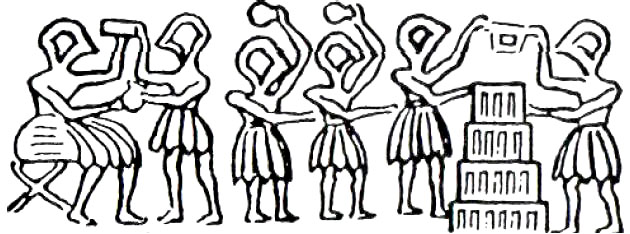
To be fair though the Sumerians specialized in making fantastical costume jewellery for their ladies;
explow.com...
edit on 19-5-2012 by Kantzveldt because: (no reason given)
edit on 19-5-2012 by Kantzveldt because:
typo
Taking our considerations of this Gemini-Taurus gate furthur, perhaps to infinity and beyond, the gate needs to be considered as toward the
'Anti-Centre of our Galaxy;
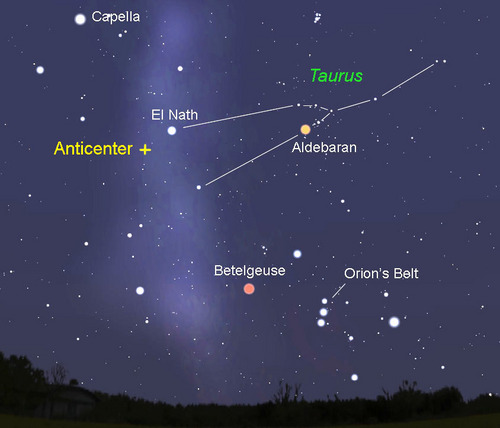
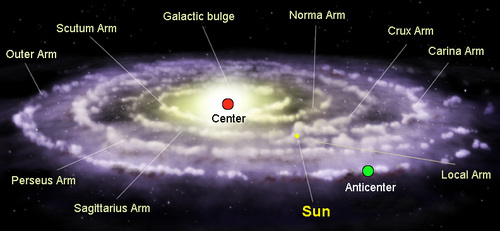
astrobob.areavoices.com...
If one were to imagine then our galaxy as a great labyrinth or maze then this gate toward the Anti-Centre would be the way in or out of such;
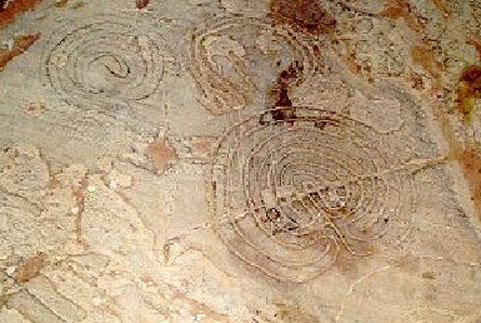
With this in mind, consider the following passages from Enki and the world order, were the shrine of the land is compared to the Heavens;
www.gatewaystobabylon.com...
Thus the shrine is compared to a maze, whose upper station is that of Auriga, the Anti-Centre being closest to El Nath, the shared star at the tip of the horn of Taurus and Auriga, the charioteer.
Above the Bull's horns, sharing the horn-tip star Zeta Tauri with the Bull, is Auriga, the Charioteer. In the early Euphratean star-list this was Mar-urbi "The-Chariot-by-itself", the Semitic Narkabtu-istênis, also called Gar "Chariot" and Sugi "Chariot-Yoke". Surviving fragments of very ancient cuneiform tablets hint that this figure was associated with fertility and abundant crops:
internationalastrologers.com...
The Greek myth of Auriga as the charioteer needs to be looked at, but the Sumerian context appears to have been that the chariot or carriage could well have been Taurus itself, and that Auriga in some way rode or led the bull, which is interesting in that as seen the motifs related to the gate show Taurus stood upon, this translation from French;
www.uranos.fr...
What one also appears to have had then at this centre point is a division of Northern and Southern celestial hemispheres located at the horns of Taurus, which makes sense as this is the centre line through the heart of our labyrinth.
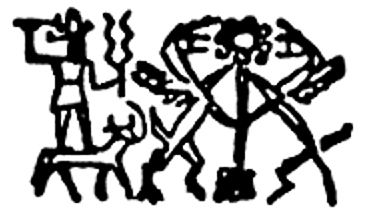


the anticenter is directly opposite Sagittarius in the direction of Auriga the Charioteer and very near the star El Nath that defines the tip of Taurus the Bull’s northern horn. Direct your gaze toward the bull’s horns and you’ll quickly find yourself in the Milky Way’s countryside. The bright lights and busy intersections of the galactic metropolis are now far behind you. Not much going on here. True, you’re looking through 25,000 light years of galaxy, but things thin out as you approach the edge and you soon find yourself teetering on the starless emptiness of intergalactic space.
While the hazy band of the Milky Way is still visible through Auriga and Taurus, it’s thin and anemic compared to summer’s billowy star clouds. Imagine your viewpoint from a planet orbiting a star at the anticenter. During the part of the year when you’d face back toward the galaxy’s center, the sky would be filled with stars, but for the remainder of the year you’d face a nearly starless sky as you looked across the enormous chasm of space separating the Milky Way from the galaxies beyond. You might even feel a touch of vertigo as you stood there at the edge of the abyss.
astrobob.areavoices.com...
If one were to imagine then our galaxy as a great labyrinth or maze then this gate toward the Anti-Centre would be the way in or out of such;

With this in mind, consider the following passages from Enki and the world order, were the shrine of the land is compared to the Heavens;
Sumer, great Kur, made of what is above and below, robed in enduring light, settling the me upon the people from sunrise to sunset, your me are lofty me, untouchable, your heart is a maze, inscrutable, your life-giving womb, the place where the gods give birth: like heaven it cannot be touched. It gives birth to kings who fasten the lasting diadem. It gives birth to the high priests who put crown to head
A shrine erected: a holy shrine it is, its interior is like a maze; a shrine whose interior is a twisted thread,
a thing unknown to man, a shrine whose lower station is the roving iku-constellation, a holy shrine whose upper station moves toward the chariot-constellation,
www.gatewaystobabylon.com...
Thus the shrine is compared to a maze, whose upper station is that of Auriga, the Anti-Centre being closest to El Nath, the shared star at the tip of the horn of Taurus and Auriga, the charioteer.
Above the Bull's horns, sharing the horn-tip star Zeta Tauri with the Bull, is Auriga, the Charioteer. In the early Euphratean star-list this was Mar-urbi "The-Chariot-by-itself", the Semitic Narkabtu-istênis, also called Gar "Chariot" and Sugi "Chariot-Yoke". Surviving fragments of very ancient cuneiform tablets hint that this figure was associated with fertility and abundant crops:
internationalastrologers.com...
The Greek myth of Auriga as the charioteer needs to be looked at, but the Sumerian context appears to have been that the chariot or carriage could well have been Taurus itself, and that Auriga in some way rode or led the bull, which is interesting in that as seen the motifs related to the gate show Taurus stood upon, this translation from French;
In lists the oldest, those of Ur III or at the end of the third millennium BC, we find a star named mul.giš.GIGIR, whose Akkadian equivalent is Narkabtu, "Chariot," which will star identified β Tau.
* In the Journals of the first millennium, this figure corresponds to a carriage comes with two stars say
"Normal", that is to say as landmarks on the path of the sun, namely, in order: ON GIGIR SA If either
"Chariot of the Boreal", for β Tau, and GIGIR Sá Ulu, "the Southern of the Chariot" for γ Tau.
This suggests, at a time when the constellations were already formed, that the Taurus would make a
Carriage which was led by a figure which will, among the Greeks, 'Hνίοχος, "the Charioteer"
www.uranos.fr...
What one also appears to have had then at this centre point is a division of Northern and Southern celestial hemispheres located at the horns of Taurus, which makes sense as this is the centre line through the heart of our labyrinth.

edit on 4-6-2012 by Kantzveldt because: typo
edit on 4-6-2012 by Kantzveldt because: typo
A few notes on the Greek myths associated with Auriga, the half serpent half human King born of the semen that fell to Earth, and who spent his
formative years hidden in a little box.
This is from a Sumerian tradition which is perhaps even more intriguing and would wind this thread up...
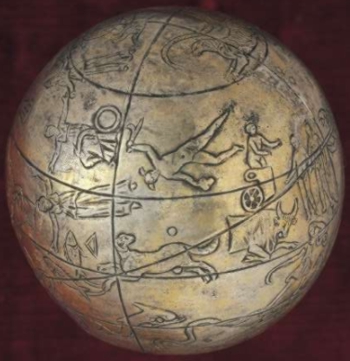
en.wikipedia.org...
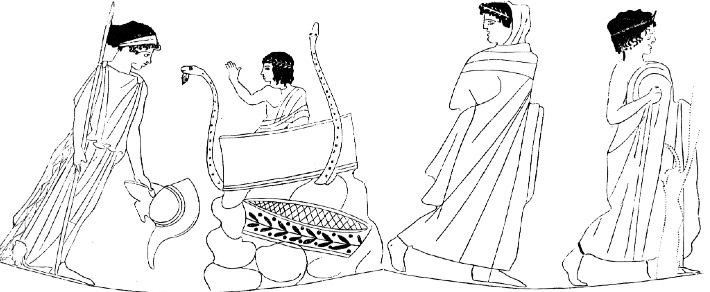
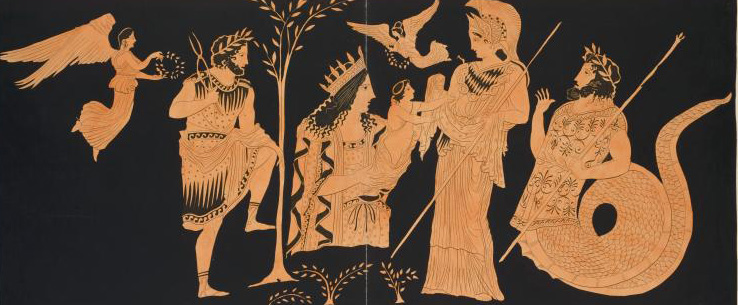
www.goddess-athena.org...

This is from a Sumerian tradition which is perhaps even more intriguing and would wind this thread up...

In Greek mythology, Auriga is often identified as the mythological Greek hero Erichthonius of Athens, the chthonic son of Hephaestus who was raised by the goddess Athena
According to the Bibliotheca, Athena visited the smith-god Hephaestus to request some weapons, but Hephaestus was so overcome by desire that he tried to seduce her in his workshop. Determined to maintain her virginity, Athena fled, pursued by Hephaestus. Despite Hephaestus' lameness, he caught Athena and tried to rape her, but she fought him off. During the struggle, his semen fell on her thigh, and Athena, in disgust, wiped it away with a scrap of wool (ἔριον, erion) and flung it to the earth (χθών, chthôn). As she fled, Erichthonius was born from the semen that fell to the earth. Athena, wishing to raise the child in secret, placed him in a small box.
Athena gave the box to the three daughters of Cecrops, the king of Athens (Herse, Pandrosus and Aglaurus), and warned them never to open it. Overcome with curiosity, Aglaurus and Herse opened the box, which contained the infant and future-king, Erichthonius ("troubles born from the earth"). (Sources are unclear whether only one sister or all three participated.) The sisters were terrified by what they saw in the box: either a snake coiled around an infant, or an infant that was half-man and half-serpent. They went insane and threw themselves off the Acropolis
en.wikipedia.org...

Erichthonius is also known as Erechtheus. A legendary king of Athens, he was the son of Gaea and Hephaestus. Born with the lower half of a snake like all the "aborigines" (first inhabitants of the world), he was given into the care of Minerva. Minerva (goddess of wisdom) and Vulcan (blacksmith of the gods, here symbolized by tongs) are Roman names, their Greek equivalents being, respectively, Athena and Hephaestus. Triton was a sea deity and the son of Poseidon, supreme god of the oceans.

Shining through all this mystery is a "sun child," neither more nor less sunlike than Apollo himself on Delos. The Athenians decorated and handled their newly born children in accordance with this example. When they gave the infants a serpentine golden necklace and placed them in round baskets, as Euripides tells of Ion (the son of Apollo and Creusa, daughter of Erechtheus), the practice represented a repetition of what happened to the divine child on the Acropolis. That child was guarded by serpents, but it was also represented as having the form of a serpent or serpentine feet. The color of gold, suited to a sun child, also has a mythological meaning, which comes to light in various remarks that have come down to us. Aglaurus loves gold, and Hermes can bribe her with gold to let him in to see Herse. The serpent of the Acropolis, too, is supposed to have been especially fond of gold, and for this reason the Athenians wore their characteristic golden hair ornaments. But the golden ornamentation became sacred only after the servants of the Goddess, the Arrephoroi, put them on. It was these same Arrephoroi, who, imitating the daughters of Cecrops but less curious than they, carried the basket with the unknown contents out of the fortress into a sanctuary on the north slope of the Acropolis. Supposedly neither they nor the priestess herself to whom they turned over the basket knew what it contained or what they brought back as they returned to that other sanctuary on the Acropolis. But the rite becomes intelligible through the story which the Arrephoroi were told to keep them from opening the basket..
www.goddess-athena.org...

To summarize the Sumerian grand vision of the Celestial portals of the Eastern and Western horizons, this was conjectured as an axis between setting
and rising into/from the Underworld, an axis of death and resurrection, symoblized by a plant or tree of life.
The tree symbolism was interwoven with serpent symbolism, to the extent that it might be considered that the ecliptic plane and galactic plane that linked the horizons were concieved as inter-twined serpentine aspects, or as the roots of a tree.
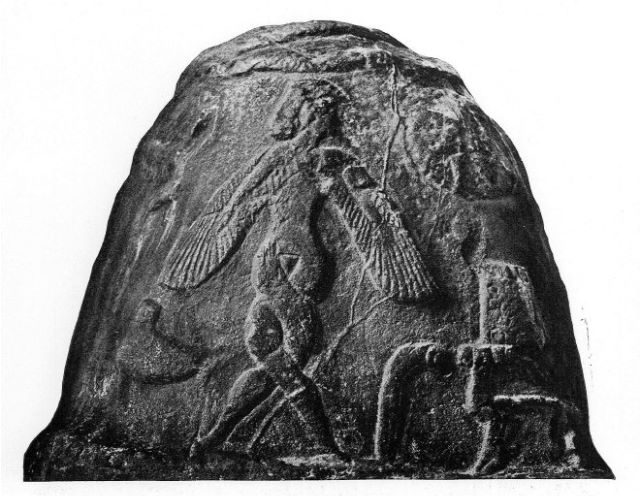

By definition then this axis is representative of the 'Tree of Life', and would appear generally to have ran midpoint between the ecliptic and galactic planes, through the constellations such as Andromeda[stag),Perseus (panther) Aires (ram). The 'square' of Pegasus, the Field or Iku constellation seems to have related to the central place of establishment, the base.
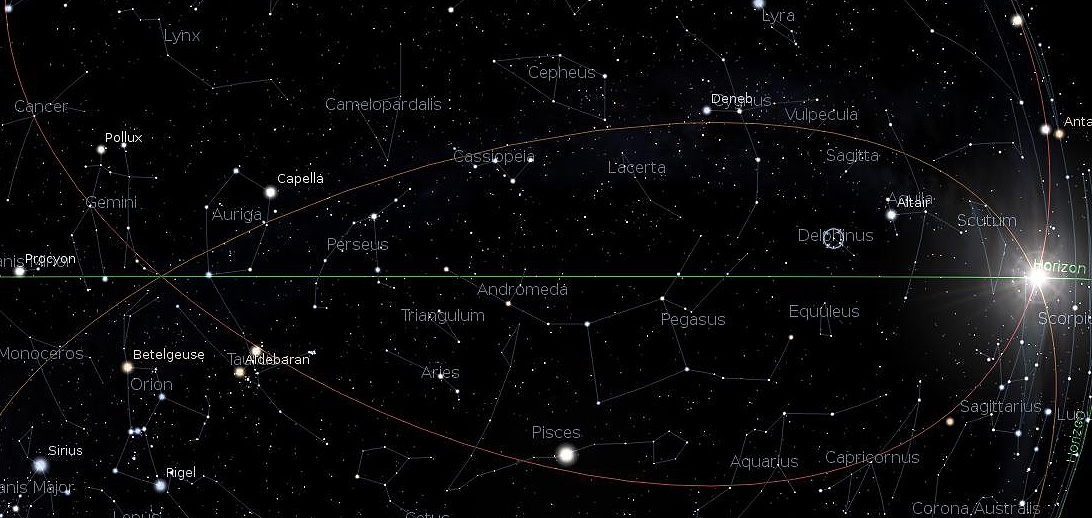
The meaning of the name dnin.giš.zid.da, 'Lord of the good tree', is obscure (although Jacobsen 1973, 7, reads it as: 'the power of the tree to draw substance through its roots').
He was an Underworld deity; the Sumerian Temple-Hymn (Sjoberg, Bergmann, No.15) describes his 'house' in Gišbanda as 'a dark cellar, (an) awe-inspiring place'; Ning~išhzida himself is the 'prince who stretches his pure hand to heaven, with luxuriant and abundant hair (flowing down his) back'. "The god Ning~išhzida, "Lord of the good tree," who represented the numinous power in trees to draw nourishment and to grow, had as his basic form that of the tree's trunk and roots; however, the winding roots, embodiments of living supernatural power, free themselves from the trunk and become live serpents entwined around it."
The existence of a tradition of Ningišzida as incantation specialist is suggested further here "Lord, your mouth is that of [a pure magician] a snake with a great tongue, a magician
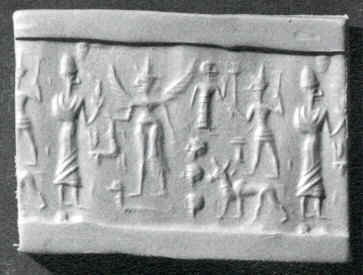
This seeming inconsistency of a god of trees who is also a god of serpents resolves itself once it is realized that the ancients considered the roots of trees in some ways "identical" with serpents....That they did so consider them is clear from the sign for tree root, arina, which consists of two crossed signs for serpent (MUŠ). A variant sign adds the sign for tree, g~iš. In its earlier pictographic form this sign-group would have constituted a slightly abbreviated form of the 'caduceus." which thus shows itself as representing the trunk of a tree with its roots in sepent form. In fact, the representations of Ningišzida on Gudea's monuments may well be a humanized version of the "caduceus," the serpents' heads remain, but their bodies and the tree trunk having been made into a human figure
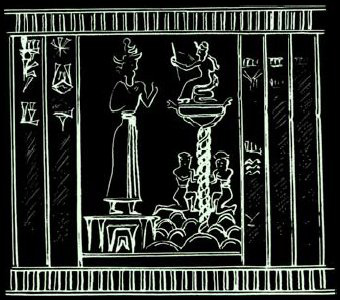
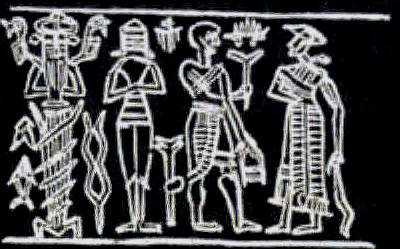
As god of tree roots, Ningišzida naturally would have and, one would think, always would have had his abode underground, that is, in the Nether World. In the myths about him, though, he is not thus represented but rather as an Upper World deity who was taken forcibly down below. This, it will be recognized, is the standard pattern for the myths about the dying gods of vegetation."

It has been suggested that Ningishzidda was originally god of the health-giving plant, the herb of life. Yet the plant which springs from the flowing vase is not peculiar to Ningizzida, and is symbolic of abundant vegetation produced by the fertilizing waters. The crested and crowned serpent was Ningizzida's symbol from very ancient times, and later it was certainly indicative of his curative powers.
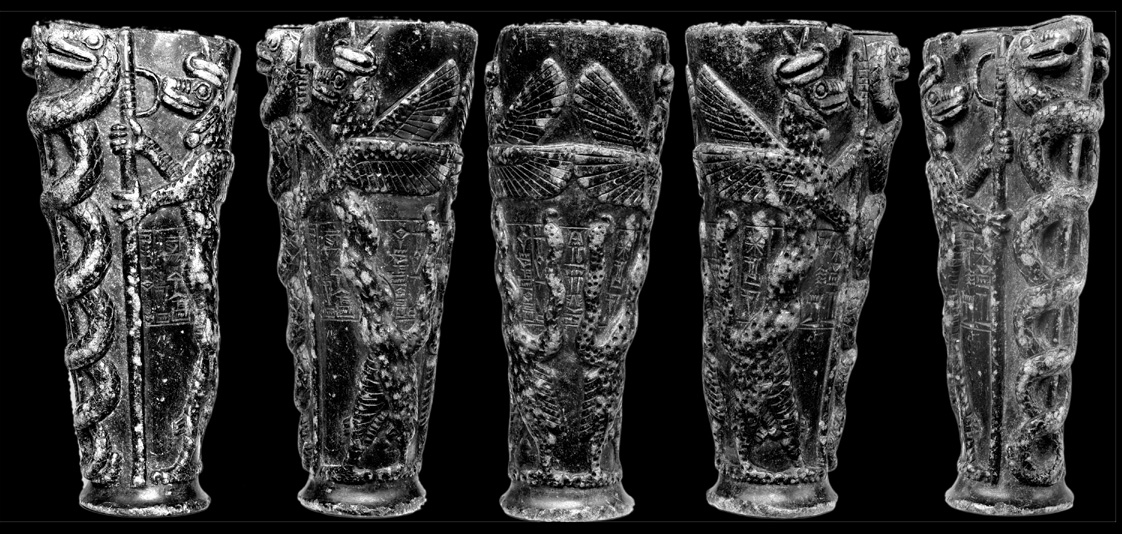
One incantation text [exorcises] fever and 'every kind of bodily evil'; 'By Ningizzida, guzalû of the wide nether World, mayest thou be exorcised!' This passage has been interpreted to mean that Ningizzida, as a chthonian divinity, received the dead who were delivered over to him by Nedû, the Chief Porter of the Underworld. The reference is not to the dead however, but to the bodily evils which Nedû was adjured to seize and bring down into the land whence there is not return; whereas Ningizzida, in his character of physician, is merely called upon to exorcise them.
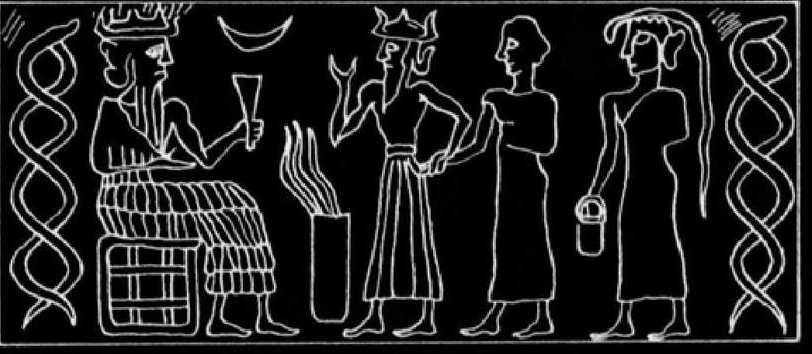
Jacobsen states that, in hymns, Ningišzida is called "Grand Serpent" (muš-mah), and "Terrifying Serpent" (muš-huš). In Ninurta's return to Nibru, the storm god describes one of his weapons as "the seven-mouthed muš-mah serpent"
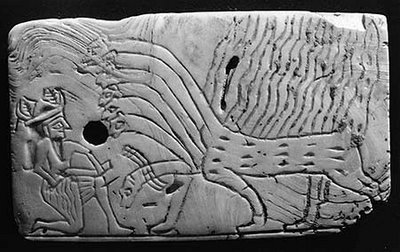
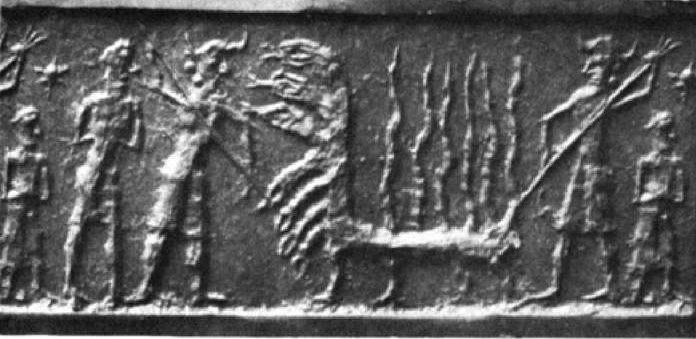
The tree symbolism was interwoven with serpent symbolism, to the extent that it might be considered that the ecliptic plane and galactic plane that linked the horizons were concieved as inter-twined serpentine aspects, or as the roots of a tree.


By definition then this axis is representative of the 'Tree of Life', and would appear generally to have ran midpoint between the ecliptic and galactic planes, through the constellations such as Andromeda[stag),Perseus (panther) Aires (ram). The 'square' of Pegasus, the Field or Iku constellation seems to have related to the central place of establishment, the base.

The meaning of the name dnin.giš.zid.da, 'Lord of the good tree', is obscure (although Jacobsen 1973, 7, reads it as: 'the power of the tree to draw substance through its roots').
He was an Underworld deity; the Sumerian Temple-Hymn (Sjoberg, Bergmann, No.15) describes his 'house' in Gišbanda as 'a dark cellar, (an) awe-inspiring place'; Ning~išhzida himself is the 'prince who stretches his pure hand to heaven, with luxuriant and abundant hair (flowing down his) back'. "The god Ning~išhzida, "Lord of the good tree," who represented the numinous power in trees to draw nourishment and to grow, had as his basic form that of the tree's trunk and roots; however, the winding roots, embodiments of living supernatural power, free themselves from the trunk and become live serpents entwined around it."
The existence of a tradition of Ningišzida as incantation specialist is suggested further here "Lord, your mouth is that of [a pure magician] a snake with a great tongue, a magician

This seeming inconsistency of a god of trees who is also a god of serpents resolves itself once it is realized that the ancients considered the roots of trees in some ways "identical" with serpents....That they did so consider them is clear from the sign for tree root, arina, which consists of two crossed signs for serpent (MUŠ). A variant sign adds the sign for tree, g~iš. In its earlier pictographic form this sign-group would have constituted a slightly abbreviated form of the 'caduceus." which thus shows itself as representing the trunk of a tree with its roots in sepent form. In fact, the representations of Ningišzida on Gudea's monuments may well be a humanized version of the "caduceus," the serpents' heads remain, but their bodies and the tree trunk having been made into a human figure


As god of tree roots, Ningišzida naturally would have and, one would think, always would have had his abode underground, that is, in the Nether World. In the myths about him, though, he is not thus represented but rather as an Upper World deity who was taken forcibly down below. This, it will be recognized, is the standard pattern for the myths about the dying gods of vegetation."

It has been suggested that Ningishzidda was originally god of the health-giving plant, the herb of life. Yet the plant which springs from the flowing vase is not peculiar to Ningizzida, and is symbolic of abundant vegetation produced by the fertilizing waters. The crested and crowned serpent was Ningizzida's symbol from very ancient times, and later it was certainly indicative of his curative powers.

One incantation text [exorcises] fever and 'every kind of bodily evil'; 'By Ningizzida, guzalû of the wide nether World, mayest thou be exorcised!' This passage has been interpreted to mean that Ningizzida, as a chthonian divinity, received the dead who were delivered over to him by Nedû, the Chief Porter of the Underworld. The reference is not to the dead however, but to the bodily evils which Nedû was adjured to seize and bring down into the land whence there is not return; whereas Ningizzida, in his character of physician, is merely called upon to exorcise them.

Jacobsen states that, in hymns, Ningišzida is called "Grand Serpent" (muš-mah), and "Terrifying Serpent" (muš-huš). In Ninurta's return to Nibru, the storm god describes one of his weapons as "the seven-mouthed muš-mah serpent"


edit on 11-6-2012 by Kantzveldt because: typo
edit on 11-6-2012 by Kantzveldt because: add
I'll add my Station of Nibru explanation here;
The earliest known usage of the term will be regarding the Sumerian city of Nibru, where the divine powers were allotted and the black-headed people prolificly multiplied, where the black-headed people used to cool themselves in its spreading shade
etcsl.orinst.ox.ac.uk...
Points of interest, Nibru or as it is now known Nippur, was sacred to Enlil and was seen as foremost and central to the Sumerians, thus Nibru to the Sumerians was the very centre of the world.
www.historyfiles.co.uk...
The Babylonian astronomy referances;
He (Marduk) made the stations for the great gods;
The stars, their images, as the stars of the Zodiac, he fixed.
He ordained the year and into sections he divided it;
For the twelve months he fixed three stars.
After he had ... the days of the year ... images,
He founded the station of Nibir to determine their bounds;
That none might err or go astray,
He set the station of Bel and Ea along with him.
He opened great gates on both sides,
He made strong the bolt on the left and on the right.
In the midst thereof he fixed the zenith;
.
www.sacred-texts.com...
There were three pathways across the horizons in Sumeria, the Path of Ea, the most Southerly correspondant to the Winter Solstice declination, Enlil in the North correspondant to the Summer Solstice declination, and Anu, correspondant to due East-West axis.
In the Enuma Elish the station of Nibir is considered then in terms of one of these, on the Wikli page it is neither Enlil or Ea
When Marduk fixed the locations (manzazu) of Nibiru, Enlil and Ea in the sky.
and thus one would assume Nibir is being considered as an alternative for the omitted path of Anu, ie the central band. Enlil was commonly refered to as Bel, but the term could be applied to any God, and then again the city of Nibru was sacred to Enlil and the two names inter-changeable, so thus some have considered the Station of Nibir correspondant to the Path of Enlil and thus the summer solstice.
However, if the path of Anu, the central band has been replaced with the Station of Nibir, there could be a greater reason in that Nibir, with it's correspondance to centre, could relate not only to the East-West axis but also the North-South, this i would consider the likely reason.
This then will make sense of quotes such as;
Nibiru, which is said to have occupied the passageways of heaven and earth, because everyone above and below asks Nibiru if they cannot find the passage. Nibiru is Marduk's star which the gods in heaven caused to be visible. Nibiru stands as a post at the turning point. The others say of Nibiru the post: "The one who crosses the middle of the sea (Tiamat) without calm, may his name be Nibiru, for he takes up the center of it". The path of the stars of the sky should be kept unchanged
When the stars of Enlil have been finished, one big star – although its light is dim – divides the sky in half and stands there: that is, the star of Marduk (MUL dAMAR.UD), Nibiru (né-bé-ru)
If Mercury (MULUDU.IDIM.GU4) divides the sky and stands there, [its name] is Nibiru
The turning point of the sky would be the celestial North, around which the stars revolve, the crossing point of the Heavens, and thus when planets such as Jupiter and Mercury are in this central position they are refered to as Nibiru.
The astronomical terms then regarding the Station of Nibiru are derivative of the city of Nibru being related to the world centre, and determining the North-South, East-West axis, the cosmology in essence then as above so below, not surprisingly Nibiru could be represented by a cross...

The earliest known usage of the term will be regarding the Sumerian city of Nibru, where the divine powers were allotted and the black-headed people prolificly multiplied, where the black-headed people used to cool themselves in its spreading shade
etcsl.orinst.ox.ac.uk...
Points of interest, Nibru or as it is now known Nippur, was sacred to Enlil and was seen as foremost and central to the Sumerians, thus Nibru to the Sumerians was the very centre of the world.
www.historyfiles.co.uk...
The Babylonian astronomy referances;
He (Marduk) made the stations for the great gods;
The stars, their images, as the stars of the Zodiac, he fixed.
He ordained the year and into sections he divided it;
For the twelve months he fixed three stars.
After he had ... the days of the year ... images,
He founded the station of Nibir to determine their bounds;
That none might err or go astray,
He set the station of Bel and Ea along with him.
He opened great gates on both sides,
He made strong the bolt on the left and on the right.
In the midst thereof he fixed the zenith;
.
www.sacred-texts.com...
There were three pathways across the horizons in Sumeria, the Path of Ea, the most Southerly correspondant to the Winter Solstice declination, Enlil in the North correspondant to the Summer Solstice declination, and Anu, correspondant to due East-West axis.
In the Enuma Elish the station of Nibir is considered then in terms of one of these, on the Wikli page it is neither Enlil or Ea
When Marduk fixed the locations (manzazu) of Nibiru, Enlil and Ea in the sky.
and thus one would assume Nibir is being considered as an alternative for the omitted path of Anu, ie the central band. Enlil was commonly refered to as Bel, but the term could be applied to any God, and then again the city of Nibru was sacred to Enlil and the two names inter-changeable, so thus some have considered the Station of Nibir correspondant to the Path of Enlil and thus the summer solstice.
However, if the path of Anu, the central band has been replaced with the Station of Nibir, there could be a greater reason in that Nibir, with it's correspondance to centre, could relate not only to the East-West axis but also the North-South, this i would consider the likely reason.
This then will make sense of quotes such as;
Nibiru, which is said to have occupied the passageways of heaven and earth, because everyone above and below asks Nibiru if they cannot find the passage. Nibiru is Marduk's star which the gods in heaven caused to be visible. Nibiru stands as a post at the turning point. The others say of Nibiru the post: "The one who crosses the middle of the sea (Tiamat) without calm, may his name be Nibiru, for he takes up the center of it". The path of the stars of the sky should be kept unchanged
When the stars of Enlil have been finished, one big star – although its light is dim – divides the sky in half and stands there: that is, the star of Marduk (MUL dAMAR.UD), Nibiru (né-bé-ru)
If Mercury (MULUDU.IDIM.GU4) divides the sky and stands there, [its name] is Nibiru
The turning point of the sky would be the celestial North, around which the stars revolve, the crossing point of the Heavens, and thus when planets such as Jupiter and Mercury are in this central position they are refered to as Nibiru.
The astronomical terms then regarding the Station of Nibiru are derivative of the city of Nibru being related to the world centre, and determining the North-South, East-West axis, the cosmology in essence then as above so below, not surprisingly Nibiru could be represented by a cross...

Perhaps these "stargates" through the horizon are actually wormholes in space, that help travel faster through the sky as they allow you to reach
heaven/constellations/the abyss and perhaps even underworld
reply to post by TheNewKid
It might be possible to make a case that is what the inter-twined serpent could relate to, transitions across axis were symbolised by such, were the linear axis is represented by trees generally...so from point A to B one travelled via serpent.
The gates themselves of course project outward as well as across the horizon and fix the Earths position in space in space, and its relationship to the galactic plane, centre and anti-centre.
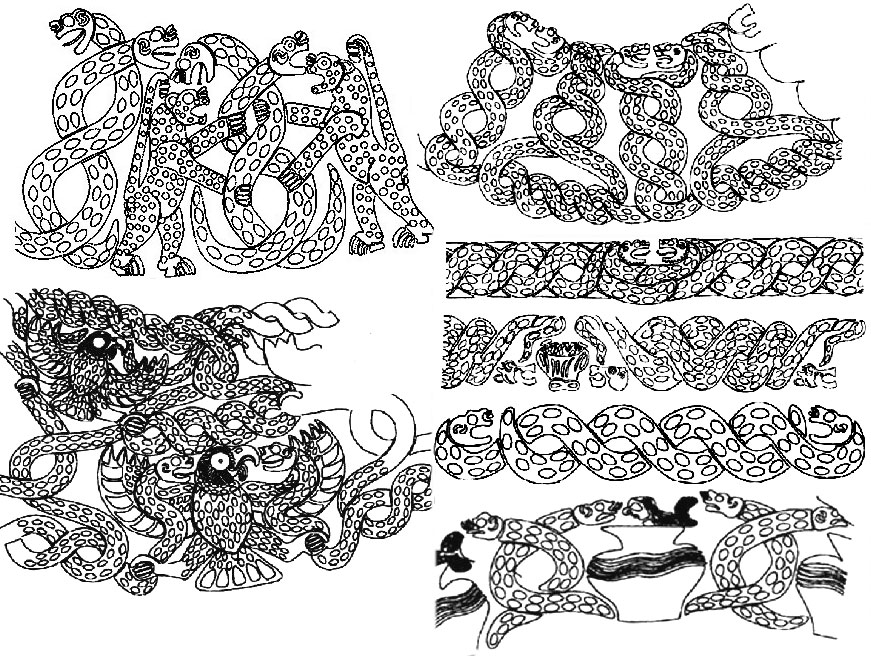
It would be a fun case to make...
It might be possible to make a case that is what the inter-twined serpent could relate to, transitions across axis were symbolised by such, were the linear axis is represented by trees generally...so from point A to B one travelled via serpent.
The gates themselves of course project outward as well as across the horizon and fix the Earths position in space in space, and its relationship to the galactic plane, centre and anti-centre.

It would be a fun case to make...
edit on 8-7-2012 by Kantzveldt because: Add
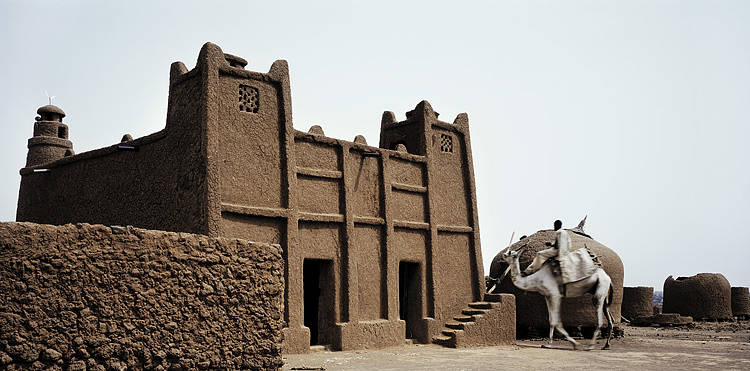
This a Mosque in Mali

A dwelling in Mali
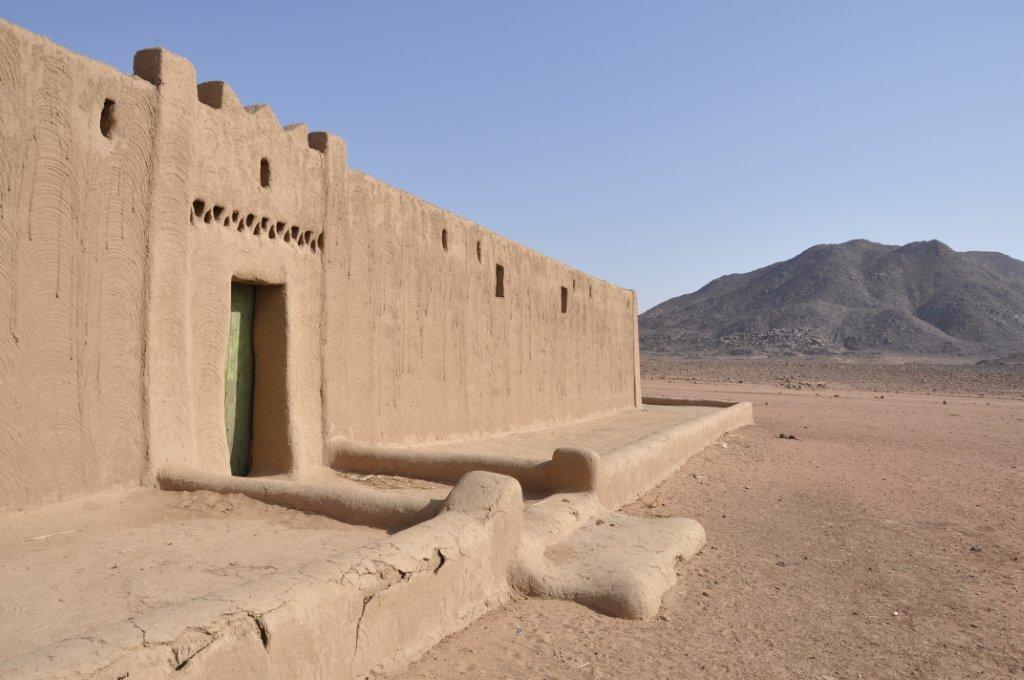
A dwelling in Sudan.
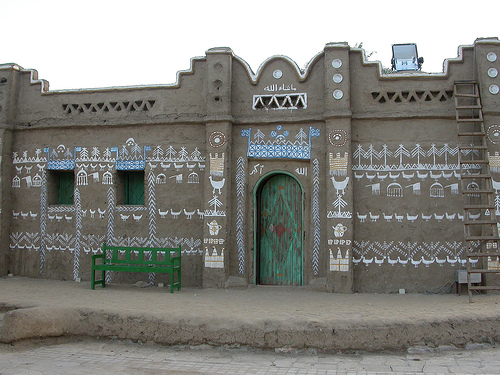
Egypt
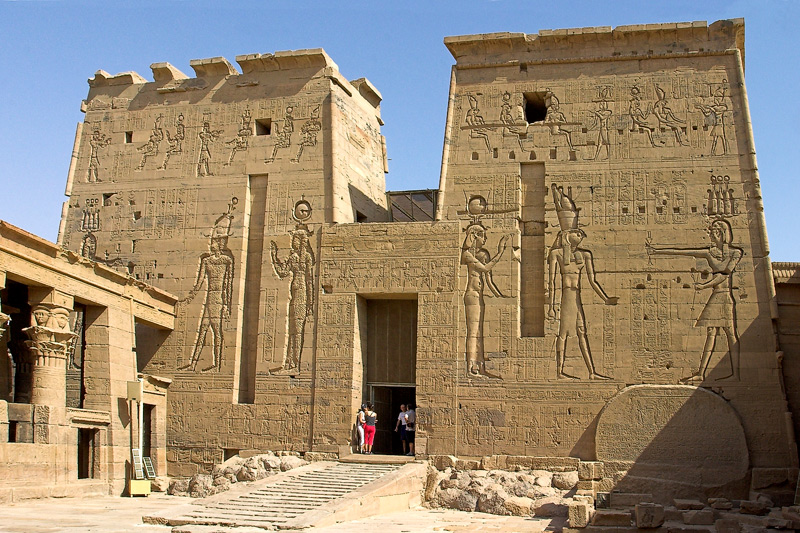
Temple in Egyptian Nubia
www.abovetopsecret.com...
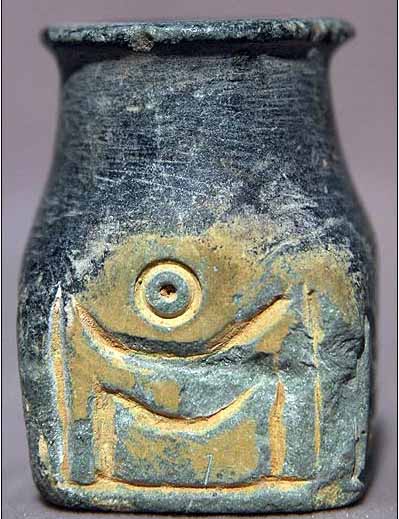
At first glance, and second, that could easily be seen as an Egyptian representation of the Akhet symbol, the sun between the two mountains of the horizons, and with good reason, for it is a Proto-Elamite version of the same. One takes the same key iconography then and considers it in a slightly more complex context; There again one finds the 'two mountains' representation, albeit without solar disc, set beneath an arc/handle which will be seen to be correspondant to the arc that the sun traverses across the sky, with interwoven serpents either side, which will be seen to correspond to means of passage. To confirm this is correct interpretation, one considers an example were the two mountains of the horizon are represented in more naturalistic form beneath the arc/handle, in conjunction with the 'Bull of Heaven' dominating both horizons, this astrological symetery being common as seen in subsequent examples.
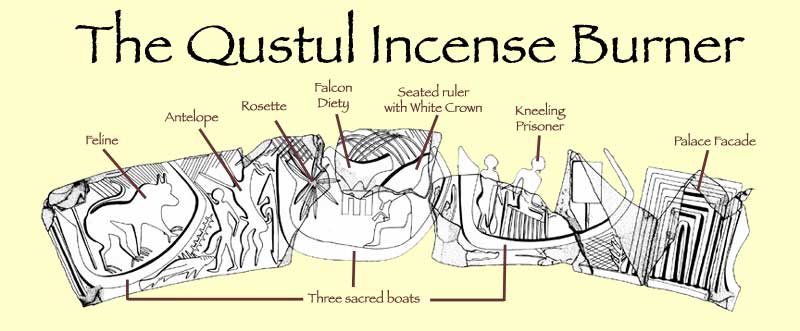


Some very interesting parallels,now with regards to the possibility of Star Gates, I am not there yet but I have to keep an open mind for me it all boils down to how much do we beleive the ancients or understand them I am just now getting into Astro-archeology and there are some very fascinating stuff out there,like the Dogon and their knowladge of the Sirius star systems but then we get into the part about Nummo an amphibian visitor from the stars and Im like wooh!! but I am willing to learn,one thing that keep me from accepting things like what's being proposed is the amount of share nonsense that one has to wade through, I do like the approach taken by Robert Bauval,another great thread will look at your other threads, thanks.
reply to post by Spider879
The proper sense of a 'star-gate'' is a gate or portal conjectured to be at the horizon through which passed the stars and planets relative to their rising and setting positions, these are very well established for Egypt and the Near East, and were generally represented in terms of architectural features, the examples you've presented could relate to this, as the same style that was conjectured for the horizon was employed in the Temple architecture.
A good example will be a Babylonian astrological stelae, the signs are those of constellations, and beneath each we see our architectural 'star-gate', which is of course in the same style as the earliest Egyptian 'Palace Facades/Proto-Serekhs',
There were as many as 36 of these star-gates or rising points conceived of as along the horizon, generally only 3 might be represented, the principle gates of the solstices and Equinox point
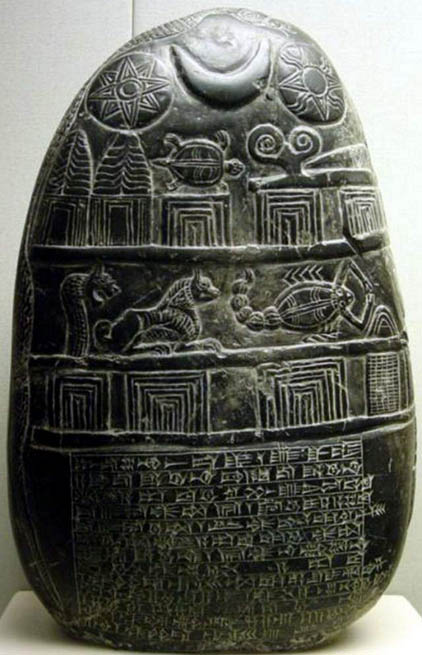
The proper sense of a 'star-gate'' is a gate or portal conjectured to be at the horizon through which passed the stars and planets relative to their rising and setting positions, these are very well established for Egypt and the Near East, and were generally represented in terms of architectural features, the examples you've presented could relate to this, as the same style that was conjectured for the horizon was employed in the Temple architecture.
A good example will be a Babylonian astrological stelae, the signs are those of constellations, and beneath each we see our architectural 'star-gate', which is of course in the same style as the earliest Egyptian 'Palace Facades/Proto-Serekhs',
There were as many as 36 of these star-gates or rising points conceived of as along the horizon, generally only 3 might be represented, the principle gates of the solstices and Equinox point

edit on 4-3-2013 by Kantzveldt because: (no reason given)
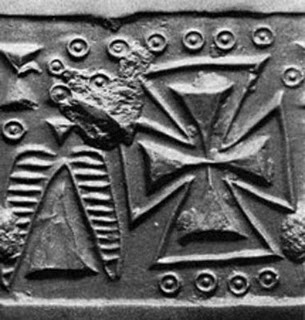
Kantzveldt could please tell us more about the frankly Templar cross above you said it meant horizon and when you said star gate you are speaking of a physical star gate where beings enter and exit not something like your soul or astral body traveling to the stars am I right?
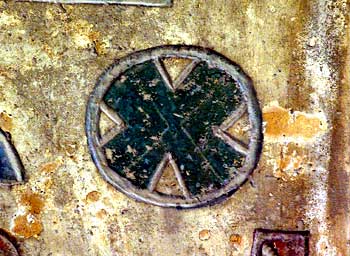
This glyph stands for city,village or community in Kemet it is generally positioned like an X ,but I had came across a Templar cross in high land Ethiopia from the Axumite era but pre Lalibela I did not store it nor can I find it again if you know what I am talking about would you be kind enough to post it much thanks.
edit on 5-3-2013 by Spider879 because: (no reason given)
reply to post by Kantzveldt
SUPERB !
We go back to a time before the wheel, so they say and discover they didn't need one. They were using star gates.
Oh and they thought the Earth was flat too.
SnF OP !
SUPERB !
We go back to a time before the wheel, so they say and discover they didn't need one. They were using star gates.
Oh and they thought the Earth was flat too.
SnF OP !
new topics
-
Akkabadori: history of tolerant euthanasia
History: 1 hours ago -
Don Trump-Quixote
Political Issues: 3 hours ago -
Paranoia that will tear apart Russia and China
World War Three: 4 hours ago -
SecretKnowledge sez howaryiz all, im back.
Introductions: 7 hours ago -
Egypt to join South Africa genocide case at ICJ
Middle East Issues: 9 hours ago
top topics
-
Egypt to join South Africa genocide case at ICJ
Middle East Issues: 9 hours ago, 7 flags -
Jean Michel and Brian May Live from Bratislava
General Chit Chat: 17 hours ago, 5 flags -
SecretKnowledge sez howaryiz all, im back.
Introductions: 7 hours ago, 2 flags -
Don Trump-Quixote
Political Issues: 3 hours ago, 2 flags -
Kingdom of the Planet of the Apes
Movies: 12 hours ago, 1 flags -
Paranoia that will tear apart Russia and China
World War Three: 4 hours ago, 0 flags -
Akkabadori: history of tolerant euthanasia
History: 1 hours ago, 0 flags
active topics
-
Breaking--Hamas Accepts New Cease Fire
Middle East Issues • 462 • : Xtrozero -
Iranian Lawmaker Declares Iran Has Nuclear Weapons
Mainstream News • 34 • : Oldcarpy2 -
Why are so many Americans dying early? And this is not due to Covid-19!
Medical Issues & Conspiracies • 46 • : ADVISOR -
BREAKING: Lawsuit filed against Pfizer by leading scientists and medical professionals
Diseases and Pandemics • 64 • : Nesterfield -
Anybody else go to the movie theater a lot? Have you noticed how dead they are?
General Chit Chat • 21 • : BeyondKnowledge3 -
Don Trump-Quixote
Political Issues • 4 • : Justoneman -
A new Why Files How CRISPR and AI Destroy the World
Science & Technology • 23 • : Encia22 -
Italian Health Minister Under Investigation for Murder for Concealing COVID-19 Vaccine Deaths
Medical Issues & Conspiracies • 160 • : Nesterfield -
Healthy 15-year old girl dies two days after receiving three 'well-visit' vaccinations
Medical Issues & Conspiracies • 73 • : Nesterfield -
Exposing the cover up of Astrazeneca vaccine-induced deaths
Diseases and Pandemics • 97 • : Nesterfield
